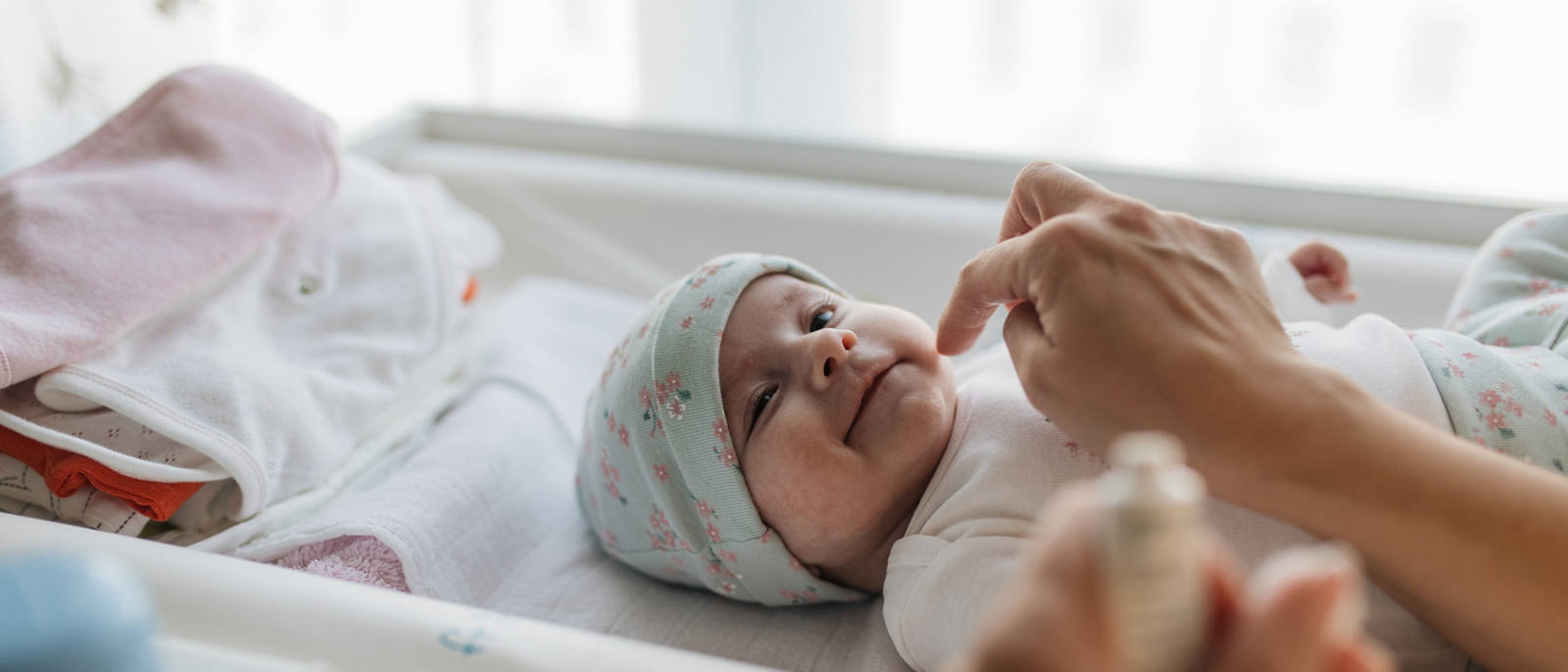Neurodermatitis in babies: what helps best

From intense itching to scratched skin and sleepless nights: for babies and toddlers, neurodermatitis is a torment. How parents can provide relief and distraction at home.
What is neurodermatitis?
Neurodermatitis is a chronic inflammatory, relapsing skin disease. It is also called atopic eczema or atopic dermatitis. Atopic means that sufferers have the genetic predisposition that causes their skin to react hypersensitively to external influences.
How common is neurodermatitis in toddlers and children?
Neurodermatitis is the most common chronic skin disease in babies and toddlers. In 85% of cases, neurodermatitis occurs during the first five years of life and gradually diminishes with age. By early adulthood, about 60 percent of sufferers are symptom-free, although they're often left with dry, sensitive skin. They may also have a higher susceptibility to allergies, such as hay fever.
What are the causes of neurodermatitis?
There are many causes. Genetic predisposition plays a role, as do environmental factors and simultaneously occurring skin inflammations. Neurodermatitis is a condition in which the skin barrier is impaired, making it permeable to allergens, microbes and other irritants such as chemicals. Allergies to certain foods (milk, eggs, peanuts), pollen or house dust mites can aggravate the condition. Negative and positive stress, cold and wet weather and scratchy wool can also trigger eczema.
What are the symptoms of neurodermatitis?
Neurodermatitis leads to constant changes to the skin’s condition. The following symptoms can occur separately or together:
-
dry, sensitive, scaly skin
-
reddening
-
weeping patches
-
crusts and nodules
-
patches of raised leathery skin
The most tormenting and stressful aspect for children is the intense itching, which often prevents them from sleeping. And frequent scratching can worsen the symptoms, as the affected area is then colonised by more bacteria.
Depending on how old the child is, eczema appears in certain standard areas of the body: in babies, the most commonly affected areas are their faces, upper body, hands, arms and legs. Neurodermatitis in toddlers appears on the back of the knees and elbows, on the face, on the neck and on the nape.
How can neurodermatitis be diagnosed in children?
There is no designated laboratory test. A dermatologist makes the diagnosis based on the symptoms described above. However, a detailed discussion with the child’s parents is essential as their observations provide information that can rule out other diseases with similar symptoms, such as psoriasis.
What can be done to combat neurodermatitis?
So far, no causal therapy has been discovered, but good basic skincare can help the diseased skin. It's important to gently cleanse the skin and treat it with moisturising lotions, creams or ointments at least once a day. The skincare products shouldn't contain any potentially irritating substances such as perfumes. Further recommendations: Use a more oily skin care product in winter. Use a product with a higher moisture content in summer.
However, if the condition continues to worsen, medically prescribed anti-inflammatory treatment will be required, such as cortisone or immunomodulators.
Good basic skincare also prevents itching.
Tips and household remedies to combat acute itching
If the child’s skin still itches, the following tips and household remedies can help:
-
Choose light clothing made of soft, breathable materials.
-
Turn clothes that have direct skin contact inside out so that the seams are on the outside.
-
Instead of fabric softener, use a small amount of vinegar.
-
Avoid heat build-up and sweating, as sweat is an additional irritant to the skin.
-
Cut and file children's fingernails short and put cotton gloves on their hands to sleep.
-
Cooled, moisturising skincare products provide additional relief.
-
Apply compresses or bandages with ointments.
-
Instead of scratching, rub, pat or stroke itchy patches.
-
Distract the child with fun games; keep their hands busy.
Does breastfeeding help prevent neurodermatitis?
This hasn’t been conclusively proven. «There's some evidence that breastfeeding can reduce the risk of atopic eczema,» says Bettina Ravazzolo. This seems to be particularly true for children whose parents or older siblings have had neurodermatitis or allergies. At least 4 months of breastfeeding is recommended.
Healthy tips
Get the CSS newsletter by email.


